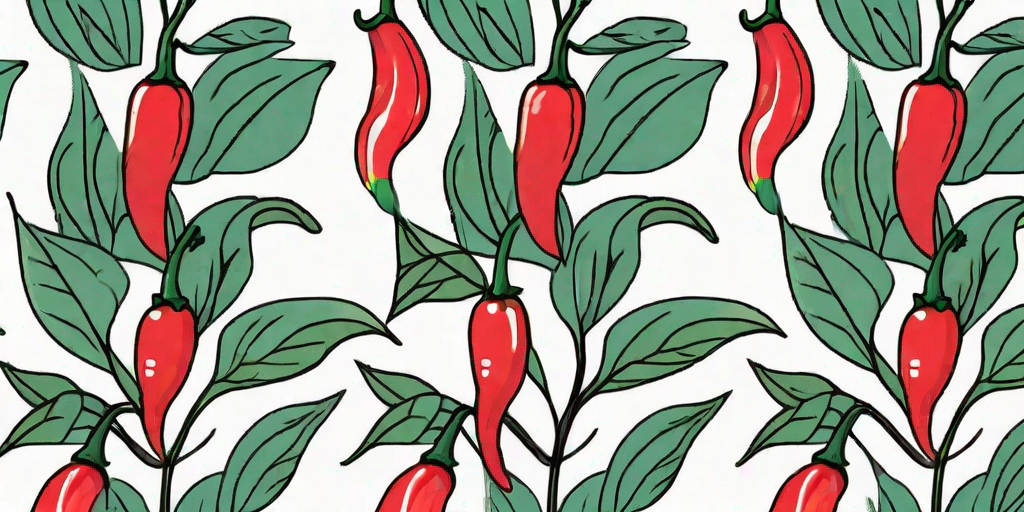
Pepper plants, with their vibrant hues and spicy fruits, are a fantastic addition to any garden. But did you know that these fiery little fellows need a bit of support to reach their full potential? That's right, we're talking about staking. Staking pepper plants can help them grow taller, produce more fruit, and resist diseases. So, if you're ready to take your pepper cultivation to the next level, grab your garden gloves and let's get started!
Why Stake Pepper Plants?
Before we dive into the 'how-to', let's first understand the 'why'. Staking pepper plants might seem like an unnecessary step, but trust us, it's worth the effort.
Firstly, staking provides physical support to your pepper plants. As they grow and bear fruit, the weight can cause the branches to bend or even break. Stakes act as a crutch, keeping your plants upright and healthy.
Secondly, staking improves air circulation around the plant. This can prevent the onset of diseases and pests that thrive in damp, stagnant conditions.
Finally, staking makes harvesting a breeze. With the peppers hanging clear of the ground, you can easily spot and pick the ripe ones. Plus, it's a great way to show off your bountiful harvest to your garden visitors!
When to Stake Pepper Plants
Timing is everything when it comes to staking pepper plants. Stake too early, and you might damage the young roots. Stake too late, and your plant might already be struggling under the weight of its fruits.
The best time to stake your pepper plants is when they are about a foot tall. At this stage, the plant is sturdy enough to handle a stake, but not so heavy that it's at risk of toppling over.
Of course, this is just a guideline. Depending on the variety of pepper and the specific conditions in your garden, you might need to adjust this timing. Keep an eye on your plants and use your best judgement.
How to Stake Pepper Plants
Materials You'll Need
Staking pepper plants doesn't require any fancy equipment. Here's what you'll need:
- Stakes: These can be made of wood, bamboo, or metal. Choose something sturdy and at least a few inches taller than your expected plant height.
- Ties: You'll need something to attach the plant to the stake. Garden twine, soft cloth strips, or even old pantyhose work great.
- Hammer: To drive the stakes into the ground.
Step-by-Step Guide
Now that you've gathered your materials, it's time to get down to business. Follow these steps to stake your pepper plants:
- Position the stake: Place the stake about 3-4 inches away from the base of the plant. Be careful not to damage the roots.
- Drive the stake: Using your hammer, drive the stake into the ground until it's secure. The top of the stake should be a few inches above the top of the plant.
- Tie the plant: Using your ties, gently secure the plant to the stake. Make sure the ties are loose enough to allow the plant to grow, but tight enough to provide support.
- Check regularly: As your plant grows, you'll need to add more ties. Check your plants regularly to ensure they're secure and healthy.
Troubleshooting Common Issues
Staking pepper plants is generally a straightforward process, but like any gardening task, it can come with its share of challenges. Here are some common issues and how to solve them:
Stake is Loose
If your stake is wobbling or leaning, it might not be driven deep enough into the ground. Try hammering it in a bit further. If the ground is too hard, you might need to water the area first to soften it up.
Plant is Chafing
If you notice your plant's stem is chafed or damaged where it's tied to the stake, it might be tied too tightly. Loosen the ties a bit to give the plant some breathing room. Remember, the goal is support, not strangulation!
Frequently Asked Questions
- Can I use stakes for other types of plants?
- Yes, many types of plants can benefit from staking, including tomatoes, cucumbers, and eggplants.
- How many stakes do I need per plant?
- Generally, one stake per plant is enough. However, for larger plants or those with heavy fruit, you might need two or more stakes.
- Can I reuse stakes?
- Yes, as long as they're still sturdy and in good condition, stakes can be reused for several growing seasons.
Conclusion
Staking pepper plants might seem like a bit of a chore, but the benefits are well worth the effort. With a bit of time and care, you can help your pepper plants grow tall, produce a bountiful harvest, and become the envy of all your garden visitors. So grab those stakes and get to it, green thumb!











